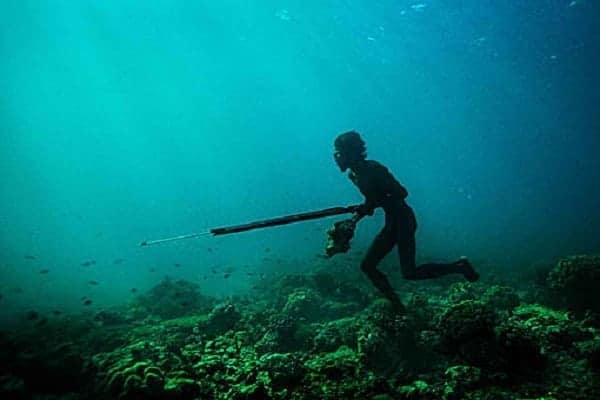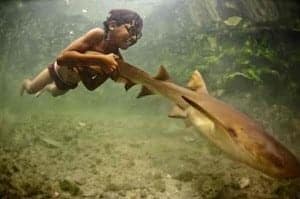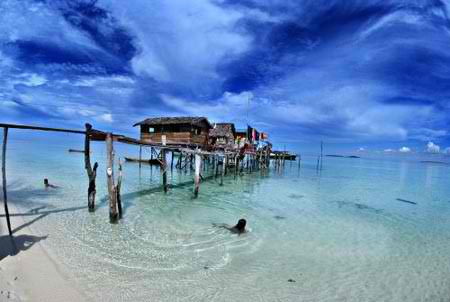“Pinoy Aquaman”: Amazing Bajau Can Dive Underwater for Up to 5 Minutes – With NO Oxygen Tank!

In 2011, a British documentary showed breathtaking underwater footage of Sulbin, a Bajau free diver. Armed with only a spear and hand-made goggles, Sulbin plunged to a sea depth of 20 meters and stayed there for minutes to catch a fish.
Is he a living superhuman or a normal guy who has developed great adaptive skills out of necessity?
“It’s all in the mind.”
Prior to any deep-sea adventure, Sulbin and other free divers undergo an intense mental preparation. Breathing exercises often lead them to a trance-like state during which their bodies become more relaxed.
Emma Farrell, the author of “One Breath, a Reflection on Free diving,” says that it’s required for any free diver to be warm, relaxed and “not hyperventilating” before jumping into the water.
Sulbin also draws strength from his well-developed mammalian dive reflex. This is the ability of the body to compensate for the sudden oxygen depletion during diving.
An average person won’t last beyond 45 seconds underwater but for Bajaus, extraordinary upbringing has forced them to adapt physically and dominate the sea for most of their lives.
From Cradle To Grave
Diving to a depth of 20 meters without an oxygen tank? Sounds unbelievable. But for Bajaus like Sulbin, it’s a skill that has long been part of their culture.
The moment a baby is born, a Badjau father fearlessly submerges the child to the water. Not because he’s cruel but to test the strength of the baby’s lungs.
Early exposure to water also enables Bajau children to develop an impressive underwater vision. Soon after, their eyes will begin to adapt by constricting the pupils more and change lens shape for increased light refraction.
As they grow older, Bajaus maintain their lean physique and even pierce their eardrums to facilitate diving. This explains why some of the older sea gypsies have a harder time hearing.
Sea Gypsies of Sulu
Bajaus are traditionally from Sulu but recent conflicts within the Autonomous Region in Muslim Mindanao (ARMM) led to a massive dispersion of the ethnic group. Today, you can normally find them roaming within the northern parts of the Philippines and some island regions of Malaysia.
The Bajau community spends most of their lives as sea-dwellers, building stilt villages on a coral reef or staying within sailing vessels such as vinta or perahu.
Thanks to the BBC documentary “Into the Blue,” the world was finally given a glimpse to a struggling community long forgotten by the Philippine government. For maritime health expert Dr. Don Eliseo Lucero-Prisno III, the documentary is a “good glimpse on how some sectors of the Philippine society are not well protected by the laws of the land.”
Sulbin might be a superhuman for some but his story deserves more than a wide-eyed fascination.
FilipiKnow
FilipiKnow strives to ensure each article published on this website is as accurate and reliable as possible. We invite you, our reader, to take part in our mission to provide free, high-quality information for every Juan. If you think this article needs improvement, or if you have suggestions on how we can better achieve our goals, let us know by sending a message to admin at filipiknow dot net
Copyright Notice
All materials contained on this site are protected by the Republic of the Philippines copyright law and may not be reproduced, distributed, transmitted, displayed, published, or broadcast without the prior written permission of filipiknow.net or in the case of third party materials, the owner of that content. You may not alter or remove any trademark, copyright, or other notice from copies of the content. Be warned that we have already reported and helped terminate several websites and YouTube channels for blatantly stealing our content. If you wish to use filipiknow.net content for commercial purposes, such as for content syndication, etc., please contact us at legal(at)filipiknow(dot)net


